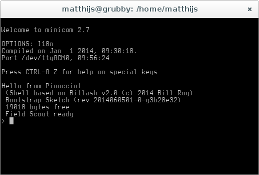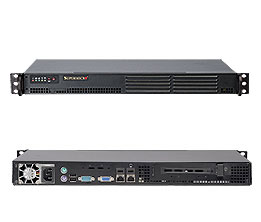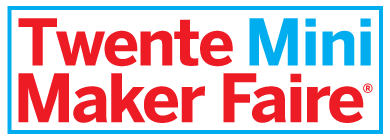These are the ramblings of Matthijs Kooijman, concerning the software he hacks on, hobbies he has and occasionally his personal life.
Most content on this site is licensed under the WTFPL, version 2 (details).
Questions? Praise? Blame? Feel free to contact me.
My old blog (pre-2006) is also still available.
See also my Mastodon page.
- Raspberry pi powerdown and powerup button (45)
- Repurposing the "Ecobutton" to skip spotify songs using Linux udev/hwdb key remapping (3)
- How to resize a cached LVM volume (with less work) (2)
- Reliable long-distance Arduino communication: RS485 & MODBUS? (6)
- USB, Thunderbolt, Displayport & docks (21)
| Sun | Mon | Tue | Wed | Thu | Fri | Sat |
|---|---|---|---|---|---|---|
| 1 | 2 | 3 | 4 | 5 | 6 | |
| 7 | 8 | 9 | 10 | 11 | 12 | 13 |
| 14 | 15 | 16 | 17 | 18 | 19 | 20 |
| 21 | 22 | 23 | 24 | 25 | 26 | 27 |
| 28 | 29 | 30 |
(...), Arduino, AVR, BaRef, Blosxom, Book, Busy, C++, Charity, Debian, Electronics, Examination, Firefox, Flash, Framework, FreeBSD, Gnome, Hardware, Inter-Actief, IRC, JTAG, LARP, Layout, Linux, Madness, Mail, Math, MS-1013, Mutt, Nerd, Notebook, Optimization, Personal, Plugins, Protocol, QEMU, Random, Rant, Repair, S270, Sailing, Samba, Sanquin, Script, Sleep, Software, SSH, Study, Supermicro, Symbols, Tika, Travel, Trivia, USB, Windows, Work, X201, Xanthe, XBee
 &
&
(With plugins: config, extensionless, hide, tagging, Markdown, macros, breadcrumbs, calendar, directorybrowse, feedback, flavourdir, include, interpolate_fancy, listplugins, menu, pagetype, preview, seemore, storynum, storytitle, writeback_recent, moreentries)
Valid XHTML 1.0 Strict & CSS
For anyone that cares: I just replaced my GPG (Gnu Privacy Guard) key that I use for signing my emails and Debian uploads.
My previous key was already 9 years old and used a 1024-bit DSA key. That seemed like a good idea at the time, but for some time these small keys and signatures using SHA-1 have been considered weak and their use is discouraged. By the end of this year, Debian will be actively removing the weak keys from their keyring, so about time I got a stronger key as well (not sure why I didn't act on this before, perhaps it got lost on a TODO list somewhere).
In any case, my new key has ID A1565658 and fingerprint E7D0 C6A7
5BEE 6D84 D638 F60A 3798 AF15 A156 5658. It can be downloaded from
the keyservers, or from my own webserver (the latter includes
my old key for transitioning).
Now, I should find some Debian Developers to meet in person and sign my key. Should have taken care of this before T-Dose last year...

While trying to track down a reset bug in the Pinoccio firmware, I
suspected something was going wrong in the dynamic memory management
(e.g., double free, or buffer overflow). For this, I wrote some code to
log all malloc, realloc and free calls, as wel as a python script
to analyze the output.
This didn't catch my bug, but perhaps it will be useful to someone else.
In addition to all function calls, it also logs the free memory after
the call and shows the return address (e.g. where the malloc is called
from) to help debugging.
It uses the linker's --wrap, which allows replacing arbitrary
functions with wrappers at link time. To use it with Arduino, you'll
have to modify platform.txt to change the linker options (I hope to
improve this on the Arduino side at some point, but right now this seems
to be the only way to do this).
While setting up Tika, I stumbled upon a fairly unlikely corner case in the Linux kernel networking code, that prevented some of my packets from being delivered at the right place. After quite some digging through debug logs and kernel source code, I found the cause of this problem in the way the bridge module handles netfilter and iptables.
Just in case someone else actually finds himself in this situation and actually manages to find this blogpost, I'll detail my setup, the problem and it solution here.


When working with an Arduino, you often want the serial console to stay open, for debugging. However, while you have the serial console open, uploading will not work (because the upload relies on the DTR pin going from high to low, which happens when opening up the serial port, but not if it's already open). The official IDE includes a serial console, which automatically closes when you start an upload (and once this pullrequest is merged, automatically reopens it again).
However, of course I'm not using the GUI serial console in the IDE, but minicom, a text-only serial console I can run inside my screen. Since the IDE (which I do use for compiling uploading, by calling it on the commandline using a Makefile - I still use vim for editing) does not know about my running minicom, uploading breaks.
I fixed this using some clever shell scripting and signal-passing. I
have an arduinoconsole script (that you can pass the port number to
open - pass 0 for /dev/ttyACM0) that opens up the serial console, and
when the console terminates, it is restarted when you press enter, or a
proper signal is received.
The other side of this is the Makefile I'm using, which kills the serial console before uploading and sends the restart signal after uploading. This means that usually the serial console is already open again before I switch to it (or, I can switch to it while still uploading and I'll know uploading is done because my serial console opens again).
For convenience, I pushed my scripts to a github repository, which makes it easy to keep them up-to-date too:


(This post has been lying around as a draft for a few years, thought I'd finish it up and publish it now that Tika has finally been put into production)
A few months years back, I purchased a new server together with some friends,
which we've named "Tika" (daughter of "Tita Tovenaar", both wizards
from a Dutch television series from the 70's). This name combine's
Daenney's "wizards and magicians" naming scheme with my "Television
shows from my youth" naming schemes quite neatly. :-)
It's a Supermicro 5015A rack server sporting an Atom D510 dual core processor, 4GB ram, 500GB of HD storage and recently added 128G of SSD storage. It is intended to replace Drsnuggles, my current HP DL360G2 (which has been very robust and loyal so far, but just draws too much power) as well as Daenney's Zeratul, an Apple Xserve. Both of our current machines draw around 180W, versus just around 20-30W for Tika. :-D You've got to love the Atom processor (and it probably outperforms our current hardware anyway, just by being over 5 years newer...).
Over the past three years, I've been working together with Daenney and Bas on setting up the software stack on Tika, which proved a bit more work than expected. We wanted to have a lot of cool things, like LXC containers, privilege separation for webapplications, a custom LDAP schema and a custom web frontend for user (self-)management, etc. Me being the perfectionist I am, it took quite some effort to get things done, also producing quite a number of bug reports, patches and custom scripts in the process.
Last week, we've finally put Tika into production. My previous server, drsnuggles had a hardware breakdown, which forced me wrap up Tika's configuration into something usable (which still took me a week, since I seem to be unable to compromise on perfection...). So now my e-mail, websites and IRC are working as expected on Tika, with the stuff from Bas and Daenney still needing to be migrated.
I also still have some draft postings lying around about Maroesja, the custom LDAP schema / user management setup we are using. I'll try to wrap those up in case others are interested. The user management frontend we envisioned hasn't been written yet, but we'll soon tire of manual LDAP modification and get to that, I expect :-)

Last week, I got a fancy new JTAGICE3 programmer / debugger. I wanted to achieve two things in my Pinoccio work: Faster uploading of programs (Having 256k of flash space is nice, but flashing so much code through a 115200 baud serial connection is slow...) and doing in-circuit debugging (stepping through code and dumping variables should turn out easier than adding serial prints and re-uploading every time).
In any case, the JTAGICE3 device is well-supported by avrdude, the
opensource uploader for AVR boards. However, unlike devices like the
STK500 development board, the AVR dragon programmer/debugger and the
Arduino bootloader, which use an (emulated) serial port to communicate,
the JTAGICE3 uses a native USB protocol. The upside is that the data
transfer rate is higher, but the downside is that the kernel doesn't
know how to talk to the device, so it doesn't expose something like
/dev/ttyUSB0 as for the other devices.
avrdude solves this by using libusb, which can talk to USB devices
directly, through files in /dev/usb/. However, by default these device
files are writable only by root, since the kernel has no idea what kind
of devices they are and whom to give permissions.
To solve this, we'll have to configure the udev daemon to create the
files in /dev/usb with the right permissions. I created a file called
/etc/udev/rules.d/99-local-jtagice3.rules, containg just this line:
SUBSYSTEM=="usb", ATTRS{idVendor}=="03eb", ATTRS{idProduct}=="2110", GROUP="dialout"
This matches the JTAGICE3 specifically using it's USB vidpid (03eb:2110,
use lsusb to find the id of a given device) and changes the group for
the device file to dialout (which is also used for serial devices on
Debian Linux), but you might want to use another group (don't forget to
add your own user to that group and log in again, in any case).

I recently got myself an Xprotolab Portable, which is essentially a tiny, portable 1Msps scope (in hindsight I might have better gotten the XMinilab Portable which is essentially the same, but slightly bigger, more expensive and with a bigger display. Given the size of the cables and carrying case, the extra size of the device itself is negligable, while the extra screen size is significant).
In any case, I wanted to update the firmware of the device, but the
instructions refer only to a Windows-only GUI utility from Atmel, called
"FLIP". I remembered seeing a flip.c file inside the avrdude sources
though, so I hoped I could also flash this device using avrdude on
Linux. And it worked! Turns out it's fairly simple.
- Activate the device's bootloader, by powering off, then press K1 and keep it pressed while turning the device back on with the menu key. The red led should light up, the screen will stay blank.
- Get the appropriate firmware hex files from the Xprotolab Portable page. You can find them at the "Hex" link in the top row of icons.
Run avrdude, for both the application and EEPROM contents:
sudo avrdude -c flip2 -p x32a4u -U application:w:xprotolab-p.hex:i sudo avrdude -c flip2 -p x32a4u -U eep:w:xprotolab-p.eep:iI'm running under sudo, since this needs raw USB access to the USB device. Alternatively, you can set up udev to offer access to your regular user (like I did for the JTAGICE3), but that's probably too much effort just for a one-off firmware update.
Done!
Note that you have to use avrdude version 6.1 or above, older versions don't support the FLIP protocol.
I just returned from the Twente Mini Maker Fair in Hengelo, where I saw a lot of cool makers and things. Eye-catchers were the "strandbeest" from Theo Janssen, a big walking contraption, powered by wind, made from PVC tubing, a host of different hackerspaces and fablabs, all kinds of cool technology projects for kids from the Technlogy Museum Heim and all kinds of cool buttonsy projects from the enthousiastic Herman Kopinga. All this in a cool industrial atmosphere of an old electrical devices factory.
Also nice to meet some old and new familiar people. I ran into Leo Simons, with whom I played theatre sports at Pro Deo years ago. He was now working with his father and brother on the Portobello, a liquid resin based 3D printer, which looked quite promising. I also ran into Edwin Dertien (also familiar from Pro Deo as well as the Gonnagles), whom seemed to be on the organising side of some lectures during the faire. I attended one lecture by Harmen Zijp and Diana Wildschut (which form the Amersfoort-based art group "de Spullenmannen") about the overlap and interaction between art and science, which was nice. I also ran into Govert Combée, a LARPer I knew from Enschede.
Overall, this was a nice place to visit. Lots of cool stuff to see and play with, lots of interesting people. There was also a nice balance of technology vs art, and electronics vs "regular" projects: Nice to see that the Maker mindset appeals to all kinds of different people!
Okay, so I'm gonna build a system to do administration tasks in our LARP club. But, what exactly are these? What should this system actually do for us? I've given this question a lot of thought and these are my notes and thoughts, hopefully structured in a useful and readable way. I've had some help of Brenda so far in writing some of these down, but I'll appreciate any comments you can think of (including "hey wouldn't it be cool if the system could do x?", or "Don't you think y is really a bad idea?"). Also, I am still open for suggestions regarding a name.
General outline
The general idea of the system is to simplify various administration tasks in a LARP club. These tasks include (but are not limited to) managing event information, player information, event subscriptions, character information, rule information (skill lists, spells, etc), etc.
This information should be managable by different cooperating organisers and to some extent by the players themselves. We loosely divide the information into OC information (info centered around players) and IC information (info centered around characters). OC information is plainly editable by players or organisers, where appropriate. IC information is generally editable by organisers and players can propose changes (but only for their own characters). These changes have to be approved by an organiser before being applied.
The information should be exported in various (configurable and/or adaptable) formats, such as a list of subscribed players with payment info, a PDF containing character sheets to be printed or a list of spells for on the main website. Since the exact requirements of each club and/or event with regard to this output vary, there should be some kind of way to easily change this output.
In my work as a Debian Maintainer for the OpenTTD and related packages, I occasionally come across platform-specific problems. That is, compiling and running OpenTTD works fine on my own x86 and amd64 systems, but when I my packages to Debian, it turns out there is some problem that only occurs on more obscure platforms like MIPS, S390 or GNU Hurd.
This morning, I saw that my new grfcodec package is not working on a bunch of architectures (it seems all of the failing architectures are big endian). To find out what's wrong, I'll need to have a machine running one of those architectures so I can debug.
In the past, I've requested access to Debian's "porter" machines, which are intended for these kinds of things. But that's always a hassle, which requires other people's time to set up, so I'm using QEMU to set up a virtual machine running the MIPS architecture now.
What follows is essentially an update for this excellent tutorial about running Debian Etch on QEMU/MIPS(EL) by Aurélien Jarno I found. It's probably best to read that tutorial as well, I'll only give the short version, updated for Squeeze. I've also looked at this tutorial on running Squeeze on QEMU/PowerPC by Uwe Hermann.
Finally, note that Aurélien also has pre-built images available for download, for a whole bunch of platforms, including Squeeze on MIPS. I only noticed this after writing this tutorial, might have saved me a bunch of work ;-p
Preparations
You'll need qemu. The version in Debian Squeeze is sufficient, so
just install the qemu package:
$ aptitude install qemu
You'll need a virtual disk to install Debian Squeeze on:
$ qemu-img create -f qcow2 debian_mips.qcow2 2G
You'll need a debian-installer kernel and initrd to boot from:
$ wget http://ftp.de.debian.org/debian/dists/squeeze/main/installer-mips/current/images/malta/netboot/initrd.gz
$ wget http://ftp.de.debian.org/debian/dists/squeeze/main/installer-mips/current/images/malta/netboot/vmlinux-2.6.32-5-4kc-malta
Note that in Aurélien's tutorial, he used a "qemu" flavoured
installer. It seems this is not longer available in Squeeze, just a few
others (malta, r4k-ip22, r5k-ip32, sb1-bcm91250a). I just picked
the first one and apparently that one works on QEMU.
Also, note that Uwe's PowerPC tutorial suggests downloading a iso cd image and booting from that. I tried that, but QEMU has no BIOS available for MIPS, so this approach didn't work. Instead, you should tell QEMU about the kernel and initrd and let it load them directly.
Booting the installer
You just run QEMU, pointing it at the installer kernel and initrd and passing some extra kernel options to keep it in text mode:
$ qemu-system-mips -hda debian_mips.qcow2 -kernel vmlinux-2.6.32-5-4kc-malta -initrd initrd.gz -append "root=/dev/ram console=ttyS0" -nographic
Now, you get a Debian installer, which you should complete normally.
As Aurélien also noted, you can ignore the error about a missing boot loader, since QEMU will be directly loading the kernel anyway.
After installation is completed and the virtual system is rebooting, terminate QEMU:
$ killall qemu-system-mips
(I haven't found another way of terminating a -nographic QEMU...)
Booting the system
Booting the system is very similar to booting the installer, but we leave out the initrd and point the kernel to the real root filesystem instead.
Note that this boots using the installer kernel. If you later upgrade the kernel inside the system, you'll need to copy the kernel out from /boot in the virtual system into the host system and use that to boot. QEMU will not look inside the virtual disk for a kernel to boot automagically.
$ qemu-system-mips -hda debian_mips.qcow2 -kernel vmlinux-2.6.32-5-4kc-malta -append "root=/dev/sda1 console=ttyS0" -nographic
More features
Be sure to check Aurélien's tutorial for some more features, options and details.



